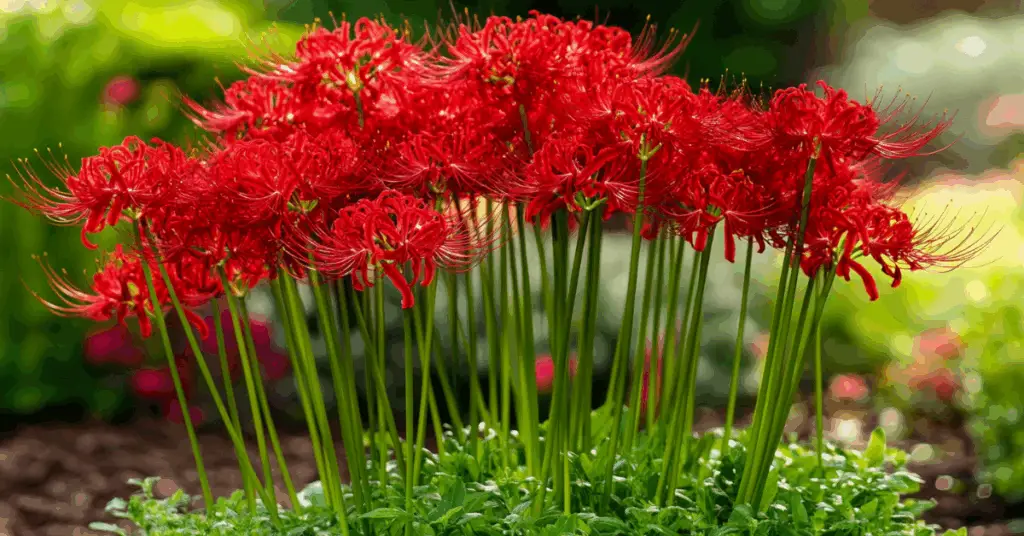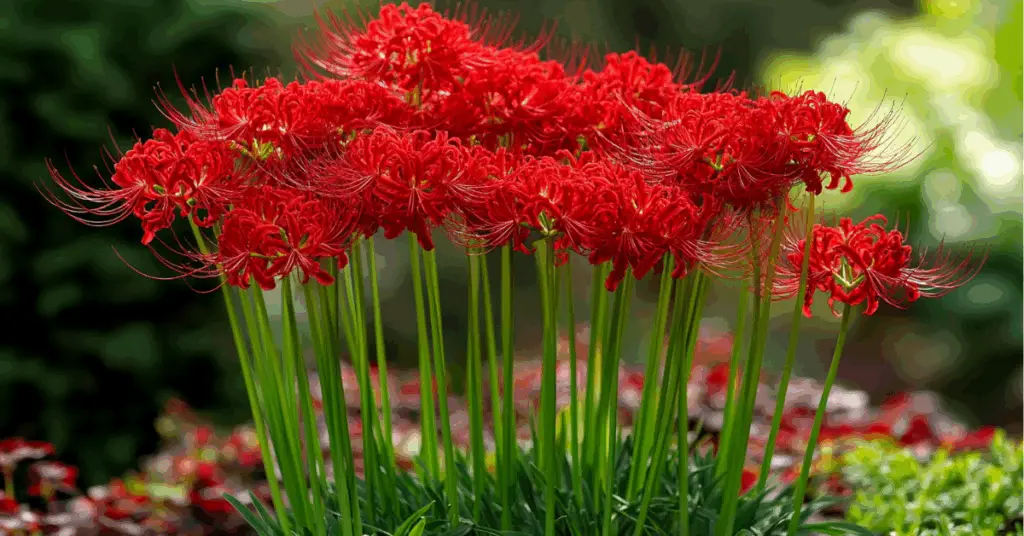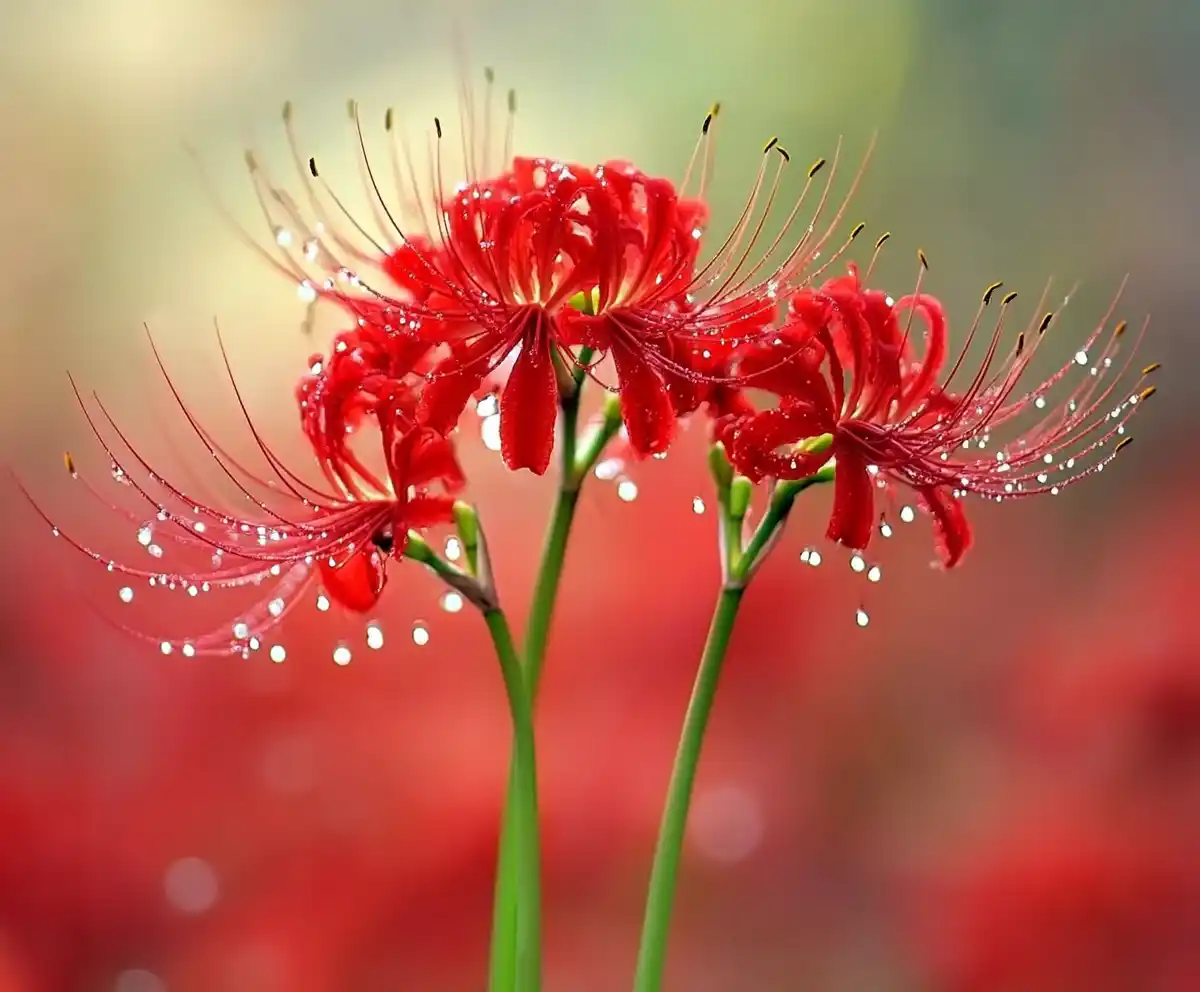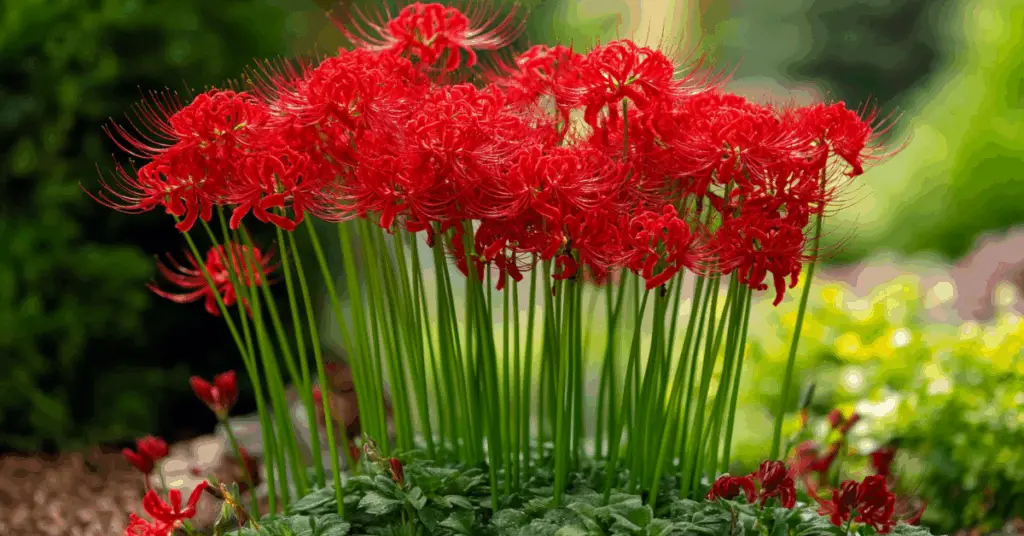Spider lilies (Lycoris radiata) are the unexpected stars of late summer and early fall gardens. Their striking, spidery red blooms rise dramatically from bare stems, offering a bold splash of color just as other flowers begin to fade. Often mistaken for amaryllis due to their similar foliage— which appears only after the flowers fade—spider lilies bring both beauty and surprise to any outdoor space. Fragrant, low-maintenance, and easy to grow from bulbs, they’re a perfect choice for gardeners seeking a vibrant yet effortless addition.
Let’s explore how to grow spider lilies successfully—whether you’re planting in garden beds or containers.
Sunlight Requirements
Spider lilies thrive on sunshine—but like many flowering bulbs, they also appreciate a bit of nuance when it comes to exposure. Ideally, these plants need at least six hours of direct sunlight per day to bloom at their best. Full sun helps stimulate strong flower production and healthy foliage development.
However, if you live in a region with intense afternoon heat, a bit of protection is wise. Plant spider lilies where they’ll receive morning sun and afternoon shade, which keeps their bulbs from overheating. In very warm climates, partial shade is acceptable, though fewer blooms may occur.
Quick Sunlight Tips:
- Minimum: 6 hours of direct sun daily
- Ideal in hot zones: Morning sun, afternoon shade
- Tolerates light shade in very warm climates
Sunlight is the fuel behind spider lilies’ stunning late-season display—give them the light they need, and they’ll reward you year after year.
Soil Preparation
Healthy spider lilies start with healthy soil. These vibrant bloomers need a well-draining, nutrient-rich foundation to thrive—soggy or compacted soil can lead to bulb rot and poor performance. The easiest and most effective way to improve your garden soil is by adding compost.
Before planting, work several inches of compost into the top 12 inches of soil. This not only enhances drainage but also delivers a slow release of nutrients that supports long-term growth without the need for frequent fertilization.
Steps for Preparing Soil:
- Use organic compost (leaf mold, aged manure, or kitchen compost)
- Mix into top 12 inches of planting area
- Ensure soil is loose and drains easily—avoid heavy clay
- For sandy soils, compost helps retain essential moisture
A little preparation goes a long way. Well-amended soil sets the stage for healthy roots, lush leaves, and an abundant floral display.
Planting Tips

Planting spider lily bulbs correctly is key to ensuring they bloom beautifully and return year after year. These bulbs are unique in that they prefer to be planted with their necks just at or slightly above the soil surface. Burying them too deep can delay or prevent flowering altogether.
Space bulbs about 8 inches apart to give their foliage plenty of room to develop after blooming. When planting in containers, choose a pot that’s at least 18 inches deep, allowing enough space for the bulbs’ root systems to spread and grow comfortably.
How to Plant Spider Lily Bulbs:
- Use a trowel to create shallow holes
- Place each bulb with the pointed end up
- Cover the bulb neck lightly or leave it slightly exposed
- Space bulbs 8 inches apart for airflow and leaf expansion
- For containers: ensure proper drainage and use deep pots
Proper spacing and depth help ensure these showy bulbs have all they need to produce vibrant flowers—and come back stronger each season.
Watering Needs
Spider lilies require thoughtful watering tailored to their growth stage. During active growth and blooming, it’s important to keep the soil evenly moist. Consistent moisture fuels strong flower production and helps establish healthy roots.
However, once the plants enter their dormant phase—after the foliage has yellowed—watering needs change. During dormancy, the goal is simply to prevent the soil from becoming bone dry, not to keep it wet.
Best Watering Practices for Spider Lilies:
- Growing season: Water regularly to keep soil moist but not soggy
- Dormant season: Water sparingly to prevent total dryness
- Technique: Water all around the bulb area—not just in one spot—to encourage even root development
- Tool tip: A moisture meter can be helpful for beginners to monitor soil hydration levels
Proper watering helps spider lilies flourish during their blooming season and rest peacefully when dormant, ensuring long-term health.
Maintenance & Overwintering

Caring for spider lilies after they bloom is simple but essential for their future success. Once the vibrant flowers fade, remove the spent blooms promptly. This tidying encourages the plant to direct energy back into the bulb rather than seed production.
When it comes to the foliage, patience is key. Allow the strappy green leaves to remain until they naturally yellow and wither. The leaves are busy photosynthesizing and storing energy for next year’s blooms, so cutting them too early can weaken the plant.
If you live in a region prone to frost or freezing winters, spider lily bulbs need special attention. These tender bulbs won’t survive deep freezes outdoors.
Overwintering Spider Lilies:
- In frost-free zones: Leave bulbs in the ground year-round
- In cold climates:
- Carefully dig up bulbs after foliage dies back
- Gently clean off excess soil
- Wrap bulbs in newspaper
- Store them in a dry, warm (but not hot) location
- Replant once the threat of frost has passed in spring
Proper maintenance ensures your spider lilies remain a reliable, beautiful feature in your garden season after season.
Frequently Asked Questions (FAQ)
1. When is the best time to plant spider lily bulbs?
The best time to plant spider lily bulbs is in late summer to early fall, allowing them to establish roots before going dormant. In colder climates, you can also plant them in early spring after the last frost.
2. How deep should spider lily bulbs be planted?
Spider lily bulbs should be planted shallowly, with the neck of the bulb just barely covered with soil or even slightly exposed. Planting them too deep can delay or prevent blooming.
3. Can spider lilies grow in containers?
Yes! Spider lilies do very well in containers as long as the pot is at least 18 inches deep and offers good drainage. This is a great option for gardeners in colder climates who need to move bulbs indoors for the winter.
4. Do spider lilies need a lot of water?
Spider lilies prefer evenly moist soil during their growth and blooming periods. During dormancy, they require minimal watering—just enough to prevent the soil from drying out completely.
5. How do you overwinter spider lilies in cold climates?
In areas with frost, dig up the bulbs after the foliage dies back, clean off excess soil, wrap them in newspaper, and store in a dry, warm place. Replant them after the danger of frost has passed in the spring.
6. Are spider lilies toxic to pets?
Yes, spider lilies are toxic to cats and dogs if ingested. Keep bulbs and plants out of reach of curious pets, or consider planting them in pet-free areas.
Conclusion
Spider lilies (Lycoris radiata) are a gardener’s secret weapon for injecting vibrant, late-season color into the landscape with very little effort. With just a few key steps—providing ample sunlight, enriching the soil with compost, planting bulbs at the correct depth, watering thoughtfully, and performing simple maintenance—you’ll be rewarded with a spectacular show of blooms year after year.
Whether you’re adding them to a garden bed or growing them in containers, spider lilies bring drama, fragrance, and easy-care beauty to any outdoor space. With a little preparation and seasonal care, these stunning flowers can become a beloved highlight of your garden.




